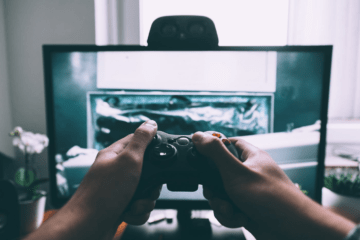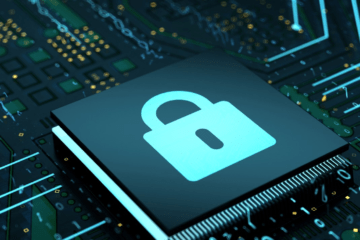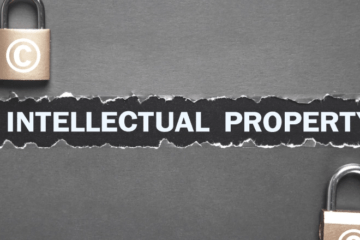
This article is written by Advocate Neha Kaushik at Jodhpur, Rajasthan, an intern under Legal Vidhiya
ABSTRACT
This article explores the concept of copyright in the digital era comprehending the infringement of copyright and the possible remedies to shield the intellectual rights of a person. Intellectual Property Rights are the legal rights that protect the creation of the mind. It can be categorized into patents, trademarks, copyrights, etc. Copyright refers to the legal right for the protection of original work of authorship.
This article delves into the aspect of Digital copyright. It has multifarious approaches that have opened new gateways for the creators of various works like literature, drama, computer programs, etc. alongside elevating the violation of the copyright.
This article discovers which works can be protected by the Copyrights Act 1957, what is digital copyright, what are the possible issues in digital copyrights as well as remedies for such issues.
KEYWORDS
Copyright, Copyright Act, Digital Copyright, Issues In Digital Copyright, IT Act, DMCA, Digitalization, Protection Of Copyrights.
INTRODUCTION
In this fast paced world, digitalization has elevated immensely and with the benefit comes its detriments.
The elevation of the digital world increased the amount of digital information made available through the internet and the web dramatically. Most of the content for public use is brought out in both digital form as well as on paper but there can be some publications that can be brought out only in digital versions. Technical advancements have opened many possibilities in different fields like media, communication, academics, advertisements, education, etc. The development in technology pose a crucial threat on the intellectual property rights of individuals.
Intellectual Property Rights are the exclusive rights given to a person related to his/her unique creation for a certain time to fully utilize his/her creation. Intellectual property rights include trademarks, patents, copyrights, plant varieties, geographical indications and industrial designs.
Copyright is one of the most important IPRs. According to WIPO, “copyright is the right that creators have over their literary and artistic works. Works covered by copyright range from books, music, paintings, sculpture, and films, to computer programs, databases, advertisements, maps, and technical drawings.”[1]
It is the exclusive legal right of the author to print, publish, sell and derive economic benefits from his creative work. In essence, copyright protects the creator’s work from commercial exploitation by others. Nonetheless, copyright issues have gathered more intensity since the invention of the internet. The continuous advancement of technology has made it effortless to copy, recreate and sell the works or creations of copyright owners without their permission.
The realization that the digital transformation will pose a threat to the intellectual property of the people led to the formation of legal provisions to protect the intellectual property rights.
Some Indian acts to protect Intellectual Property Rights are The Copyrights Act 1957, Information Technology Act 2000.
WHAT CAN BE PROTECTED USING COPYRIGHTS
Works that are frequently covered by copyright protection worldwide include
- literary works like novels, poems, newspaper articles;
- computer programs, databases, software;
- films, musical compositions, and choreography, photographs;
- artistic works such as paintings, drawings, and sculpture;
- advertisements, maps, and technical drawings.
CHALLENGES FACED BY COPYRIGHT IN DIGITAL WORLD
The radical technological change has made it incredibly simple to obtain all types of data through the internet without the consent of the creator. In this technical era, the task of copyright protection has become very difficult. The issue of digital copyright infringement will boost from what it is currently.
Copyright is the most fragile type of IPR because it becomes the easiest task for people to copy, sell and amend the literary or artistic work of someone else’s mind. The internet poses a great threat to copyright protection. People can make copies of the original work within no time throughout the World Wide Web and use them under their own name instead of the rightful owner of such content.
Additionally, affordable access to the internet and digital devices has made it a lot easier for almost everyone to store, download, display, print and forward content without the knowledge of the original owner. Copyright applies to internet email messages material on www servers or anything else put up on the internet (if protected by copyright).
Some of the most crucial digital copyright issues are:
- PIRACY
The term piracy refers to the unauthorized reproduction or illegal copying of someone else’s work like their ideas, recordings, TV programs, software, etc. A writer who does not cite his or her sources is said to be committing piracy.
Elevation of digitalization has resulted in a dramatic increase in unauthorized copying, distributing and selling of copyrighted works. Piracy has become a major concern throughout the world posing a threat to the rightful owners. Millions of materials like music, movies and animations are downloaded illegally every few hours on the internet.
- HOT-LINKING
Hot-linking basically means that an image is displayed on a web page by linking to another website displaying that image originally. It means that a link is created through unauthorized work and copying a different website. Thus hot-linking infringes the rights of copyright owners. To protect the files on one website from linking to the other website, hot-link protection can be used.
- DOWNLOADING AND UPLOADING
One of the major issues in digital copyright is related to the downloading and uploading of information from the internet without the consent of the creator.
People download various files and software and save them for later use or sale for monetary benefits using sharing and hosting methods where one person uploads a certain file to the hosting service and another person can download it. Downloading and uploading material without following the proper restrictions and authorization results in the commission of offence
- MULTIMEDIA
Multimedia is a system of entertainment that consists of a wide range of content like text, sound, music, video, photographs, graphics, live performances, etc. This wide range of content makes it difficult to provide protection for each of such things and thus becomes more vulnerable to copyright infringement.
- SOFTWARE
Easy and feasible access to the internet for everyone leads to the increasing demand for different types of software. The original software are highly priced which leads to unauthorized copying and distribution of cheap copyrighted software copies even for monetary gain.
- PEER-TO-PEER FILE SHARING
This peer-to-peer file sharing system empowers two computer systems to share files without any third server. In general, it is not illegal but transferring files between two computers without the required authorization is prohibited since it duplicates the shared copy thereby violating the author’s protected rights.
- SOCIAL MEDIA
In this modern era, almost everyone uses social media platforms for creating, sharing or exchanging ideas and information. The content created or shared may or may not be original, which leads to copyright infringement. The extensive sharing of copyrighted photographs, video ideas, captions and claiming ownership over such materials give rise to copyright infringement.
- FAIR DEALING
The fair dealing or fair use doctrine allows the use of copyrighted content for fair purposes. Section 52(1) of the Copyright Act[2] states, the following acts shall not constitute an infringement of copyright, dealing fairly with any work, excluding computer programmes, for the purposes of –
(i) private or personal use, including research;
(ii) critiques or assessment, whether of that work or any other work;
(iii) reporting on current events and current affairs, including reporting on a lecture given in public.
In certain particular situations, reproduction of the work is allowed by Indian law and does not interfere with the work’s normal exploitation.
Yet, at times it becomes difficult to analyze or identify if the specific use of the material is ‘fair use’ or not.
- CYBER COMMERCE
The term cyber commerce means trading of goods and services via the internet. The E-Commerce services provide goods and services for selling and buying. It has become easier for the general public to buy and sell products worldwide. All services like ordering food items, trading clothes, in time delivery services, electronic fund transfer, etc. are all a part of day-to-day activities of people but the information which is sent by the users can be easily hacked while passing through intermediaries before reaching the destination. The information of people and their products and services are transferred to sources that pose a serious threat to the owners of copyrighted material.
REMEDIES AGAINST ISSUES IN DIGITAL COPYRIGHT
The persistent infringement of copyright has given rise to precautionary steps taken to safeguard the rights and interests of the copyright owners or creators and consumers. Some of the solutions to this problem can be-
- BETTER IMPLEMENTATION
Better implementation of the copyright rules will act as an efficient remedy to put a stop to copyright infringement. New mechanisms to spot and punish the people violating the copyright law must be implemented.
- DIGITAL WATERMARKS
A Watermark is a design on paper that helps to identify it as authentic. Embedding a digital watermark into an object helps the owner to trace and identify his creation and also prevent it from duplication.
- DIGITAL RIGHTS MANAGEMENT (DRM)
DRM implies the protection of copyrighted data in digital technology. Digital rights management encompasses copyright restricted work and the use of technology to curb the scope of copywriting when used with proprietary software. It can be used to prevent piracy in eBooks, movies and music.
- BLOCKCHAIN TECHNOLOGY
The blockchain technology is a shielded technology where the owner of a copyrighted work can track the usage of his work and can come to know when someone attempts to illegally use his creation. This system stores the original work in a decentralized ledger and makes it sturdy to protect the privacy and security.
- ENCRYPTION TECHNOLOGY SYSTEM
With the help of an Encryption Technology System, the data is sent in an encrypted form over the internet from sender to receiver. And such data becomes accessible only with the help of a code or password which is generated by the person who encrypted that data. This encryption hides the real meaning of the sensitive information sent from one device to another.
LEGISLATIVE PROVISIONS IN INDIA FOR THE PROTECTION OF COPYRIGHTS
In the seminal case of UTV Software Communication Ltd v/s 1337x and others[3], the court’s decision confirmed that digital space is not immune from copyright laws, upholding the idea that online copyright infringement bears the same gravity as physical violation.
- THE COPYRIGHTS ACT 1957[4]
This act consolidates all the laws relating to copyright in India. It protects people from illegally downloading, copying, distributing and selling of original literature, visual images, musical and artistic works and cinematograph films, sound recordings and software. In the digital era, one can protect his or her digital work by registering with the proper copyright office
- THE DIGITAL MILLENNIUM COPYRIGHT ACT (DMCA)
The DMCA is a US-based copyright law that makes it illegal to create and distribute technology or services protected by copyright without the permission of the original copyright holder. Its main aim is to protect the rights of copyright owners as well as the consumers.
- THE INFORMATION TECHNOLOGY ACT 2000[5]
The IT Act plays a crucial role in protecting copyrights in digital communication by using various methods like recognition of digital signatures and anti-circumvention measures.
Cyber Appellate Tribunal is also established to adjudicate matters regarding copyright infringement and also specifies the penalties for various cybercrimes including copyright infringement.
- THE COPYRIGHTS RULES 2013[6]
These rules complement the Copyright Act 1957. It establishes the legal framework for the registration of works, collective administration of rights, licensing, international copyright relations and enforcement of copyrights in India. It also provides for the procedure for filing complaints and conducting legal proceedings in case of infringement of copyrights.
M/S. Entertainment Network (India) Ltd vs M/S. Super Cassettee Industries Ltd[7]
In Entertainment Network (India) Ltd. v. Super Cassette Industries Ltd., the Bombay High Court issued a significant ruling regarding the broadcasting of music by FM radio stations. The court held that FM radio stations, even those with licenses from copyright societies, must get individual consent for every song they play.
Regardless of more extensive licensing agreements, this decision highlights the significance of individual permissions for the transmission of copyrighted music. It emphasizes how broadcasting organizations must strictly conform to copyright rules and regulations in order to protect themselves from potential legal ramifications.
CONCLUSION
In conclusion, the realm of digital copyright offers a complex environment filled with challenges as well as opportunities for innovation and creativity. Digitalization has facilitated creators to share their work online but it has also given the opportunity to the people to violate the right of the copyright owners. The infringement of copyright has become recurring nowadays, but it can be curtailed by following proper measures against such infringement like watermarking, DRM, spreading education and awareness about copyright laws. There are many international treaties besides the national schemes to protect the copyrights of the owner or creator. Now the crucial point is to achieve balance between the interest of the copyright owners and the interest of the users. Furthermore, there is also a need to update the copyright laws in accordance with the impending digital copyright issues.
REFERENCES
- https://www.wipo.int/copyright/en/, (last visited on 05-02-2024)
- https://www.wipo.int/copyright/en/protection.html, (last visited on 05-02-2024)
- Nehal Wagle, Copyright in Digital Era, blog.ipleaders, (last visited on 06-02-2024), https://blog.ipleaders.in/copyright-digital-era/
- https://www.tutorialspoint.com/issues-of-copyright-in-digital-era (last visited on 04-02-2024)
- https://www.legalserviceindia.com/legal/article-10639-copyright-protection-in-the-digital-age-challenges-and-solutions.html, (last visited on 04-02-2024)
- Varsha Yadav, COPYRIGHT LAWS: CHALLENGES IN THE DIGITAL ERA, Volume IV Issue III, IJLL, https://3fdef50c-add3-4615-a675-a91741bcb5c0.usrfiles.com/ugd/3fdef5_fea52c8e9d4e4141920fd4d5eeaae9f3.pdf
- Aragonda Lakshmana Moorthy, Dr. Karisiddappa C. R., Copyright issues in digital environment, 2005, https://www.researchgate.net/publication/279509147_Copyright_issues_in_digital_enviornment
- Copyright Issues Digital Environment, https://karmaveerlibrary.files.wordpress.com/2016/10/copyright-issues-in-digital-environment.pdf,
[1] https://www.wipo.int/copyright/en/
[2] sec 52(1), THE COPYRIGHT ACT, 1957 (ACT NO. 14 OF 1957)
[3] on 10 April, 2019 AIRONLINE 2019 DEL 773
[4] COPYRIGHT ACT, 1957 (ACT NO. 14 OF 1957)
[5] THE INFORMATION TECHNOLOGY ACT, 2000 (No. 21 OF 2000)
[6] THE COPYRIGHTS RULES 2013 (14 march 2013)
[7] 16 May, 2008, SC
Disclaimer: The materials provided herein are intended solely for informational purposes. Accessing or using the site or the materials does not establish an attorney-client relationship. The information presented on this site is not to be construed as legal or professional advice, and it should not be relied upon for such purposes or used as a substitute for advice from a licensed attorney in your state. Additionally, the viewpoint presented by the author is of a personal nature.




0 Comments